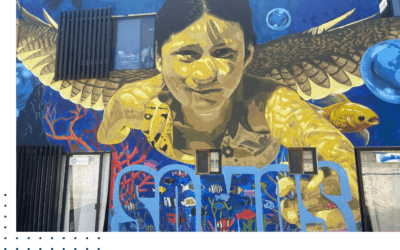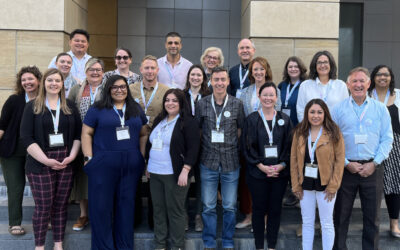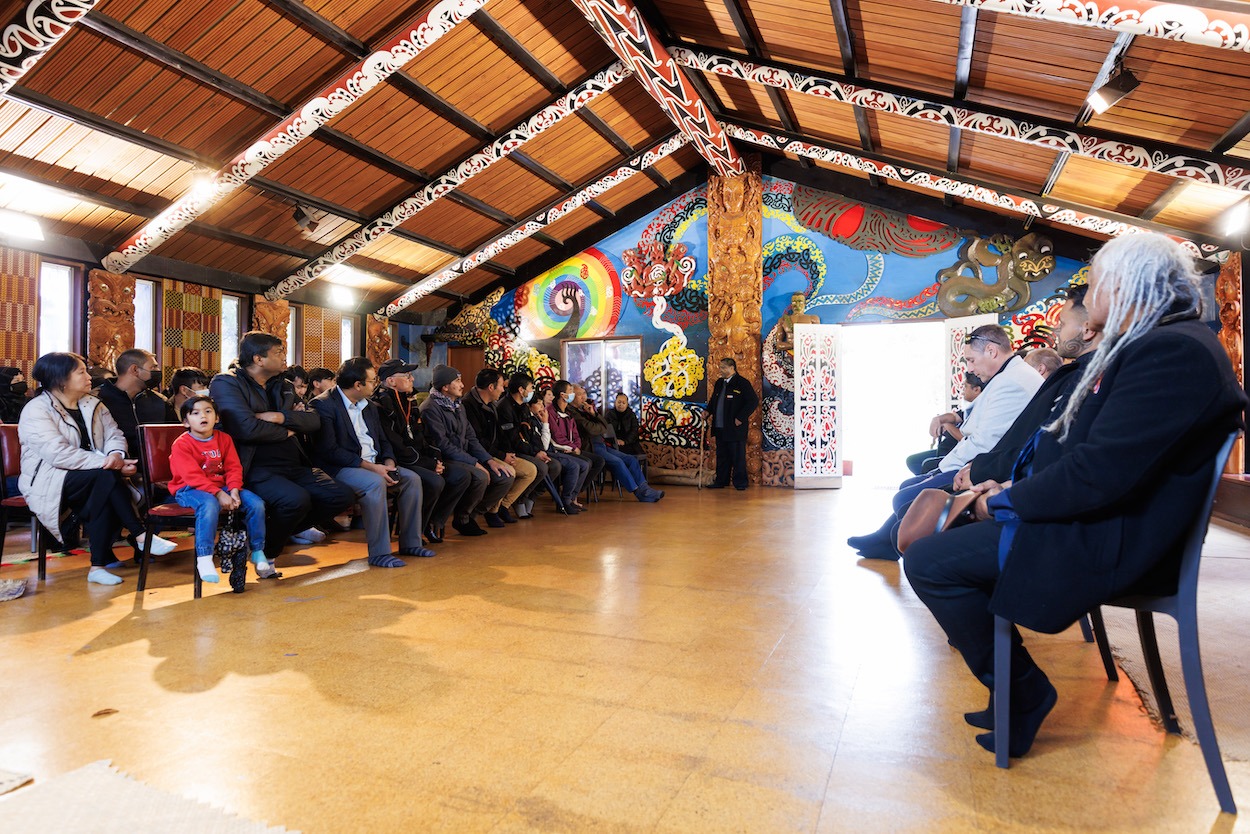
Photo description: Photo from the Te Wiki o Maanaki Community Powhiri event held at Kirikiriroa Marae in Hamilton, Waikato, New Zealand. Taken: Saturday, 10 September 2022. Photography: Mike Walen / KeyImagery Photography. Copyright: © Hamilton City Council.
An interview with Jovi Abellanosa, Ethnic Development Advisor and Welcoming Communities Coordinator at Hamilton City Council in New Zealand (Aotearoa), one of 26 communities participating in Welcoming Communities, a program led by Immigration New Zealand in partnership with the Ministry of Ethnic Communities and the Human Rights Commission. Welcoming Communities is a partner in the Welcoming International Alliance.
Q: Tell us about yourself and what motivates you to work in the Welcoming Communities program.
As a migrant from the Philippines, I moved to New Zealand 14 years ago with my family. My whole life in New Zealand, I have been working closely with migrants, former refugees, and international students, so I understand the issues and challenges of being in a new country and settling into a new place.
I’ve been with Hamilton City Council (local government) for eight years as the Ethnic Development Advisor. Currently, I work with the Community and Social Development team at the council.
Q: What is a key challenge that people living in Hamilton experience? How does your partnership with Welcoming Communities address it?
While our new project started last year, Hamilton has been in the welcoming and settlement space for many years. It formally started with the settlement of Cambodian and Somali refugees in the 1990s through the churches and supported by the Council. But while Hamilton’s settlement sector was providing excellent programmes and service, the city didn’t have a strategy focused on newcomers: migrants, refugees, and international students until through Council Hamilton joined the Welcoming Communities Programme.
We launched our plan earlier this year, and there are a few activities that we have committed to within the eight standards including Inclusive Leadership, Equitable Access and Connected and Inclusive Communities to name some. Key to this is partnering and making sure we work closely with Tangata Whenua (indigenous people of Aotearoa/New Zealand) who are Māori.
More recently, the Council has also been more intentional about diversity and inclusion. It works with an external organisation to make its policies, practices and culture more inclusive and welcoming to new staff. In the last few months, our People Safety and Wellness Team and Diversity and Inclusion Working Group have pushed several policies that support and contribute to staff diversity and inclusion, including religious and ethnic diversity, and a Rainbow Policy for LGBTQ+ community members.
Q: How does Welcoming Communities support your partnership with Māori residents?
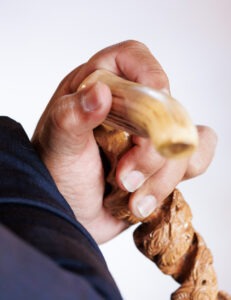
Photo from the Te Wiki o Maanaki Community Powhiri event held at Kirikiriroa Marae in Hamilton, Waikato, New Zealand. Taken: Saturday, 10 September 2022. Photography: Mike Walen / KeyImagery Photography. Copyright: © Hamilton City Council.
Our Welcoming Communities Standard is adapted to the context of New Zealand and states that “local government, tangata whenua (the people of the land) and other community leaders work together to create, advocate for and continue to foster a welcoming and inclusive community.”
This means that the Council has sought the endorsement of and partnered with tangata whenua. Our Welcoming Plan is guided by these Māori principles of Manakitanga (expression of aroha or love, hospitality, generosity and mutual respect), Whanaungatanga (relationship, kinship, sense of family connection between people), Rangatiratanga (sovereignty, self-determination, the right to exercise supreme authority), Kaitiakitanga (guardianship and protection of the environment) and Wairuatanga (distinctive identity or spirituality of people and places).
Before we submitted our expression of interest to join Welcoming Communities we reached out to the local hapū (five sub-tribes in Hamilton) presenting the intent to be part of the Welcoming Communities Programme and requesting their support and endorsement. Local hapū didn’t just want to support the program — they wanted to partner with Hamilton City Council. A few months after getting accepted to the Welcoming Communities program, all key stakeholders were invited to a commitment signing event.
It was powerful to see representatives of local hapū there signing the commitment document along with Council representatives.
Q: What motivated various stakeholders to commit to the Welcoming Communities partnership?
The local settlement network consists of many services as well as government organisations, including Hamilton Multicultural Services Trust, Refugee Orientation Center Trust, Shama Ethnic Women’s Center, the Waikato District Health Board (now Te Whatu Ora), the NZ Police, Ministry of Education and others.
As early as 2018, during the Welcoming Communities pilot program in New Zealand, we began having conversations with stakeholders and ran two workshops, first with settlement service providers, and then with ethnic community leaders to introduce Welcoming Communities. This process showed the sector’s willingness and desire for the city to be part of the programme and gave me confidence that we can commit to the program as a city-wide initiative, not one that is only council-led. We submitted our expression of interest in 2020 and were accepted in 2021.
Q: What activities did you do for Welcoming Week this year?
Fifteen organisations supported Welcoming Week by hosting their own Welcoming Events.
Along with a formal launch and the closing Welcoming Communities Night hosted by the council, we held a pōwhiri, and invited newcomers and those who have not experienced this. Pōwhiri is a formal Māori welcome to the Marae – a special place belonging to a tribe or family. The Māori use it for meetings, celebrations, funerals, and educational purposes. Having a pōwhiri is not an everyday thing – you must be invited.
Hapū organised and led this special welcome experience for newcomers, some of whom never got to experience it despite being in the country for over 20 years. After the pōwhiri, there was a short session to give context to the experience and offer guests the chance to ask questions to Māori elders and leaders.
For me, it was special that during Welcoming Week this group went into the wharenui (the most prestigious of the buildings within the Marae, which is an enclosed and sacred space for certain tribes).
Q: How did you promote Welcoming Week among newcomer residents?
The Council communicated the event by setting up an event page and promoted the week through the Council webpage. Participating host organisations were also encouraged to promote their events and Welcoming Week as a whole on their social media sites with flyers or posters they developed or adapted from templates we shared.
I have a Weekly Information and Events Alert newsletter and Welcoming Week was promoted weeks leading to it. I also sent emails to community leaders inviting them to participate and promoting it to their members.
One ESOL coordinator asked if Hamilton City Council could support a program called Welcoming Refugees to Schools facilitated by Refugees as Survivors New Zealand. With Welcoming Week funding, we helped bring this program to local ESOL teachers by focusing on trauma informed service delivery.
It was an opportunity for teachers to learn about the experiences of their students, who arrived as refugees. The program was fully subscribed and even police representatives attended, as they were interested to learn about trauma-informed perspectives and build connections with teachers. We now have a waiting list of 30 people who want to participate in the future.
Q: How do your Welcoming Week activities connect to other aspects of your Welcoming Communities work?
The feedback we have received has been really supportive and positive. One takeaway is that Welcoming Week in Hamilton provided opportunities for teachers and service providers and council to better connect. Meanwhile, the Diverse Open Day organised by EarthDiverse launched the Community Ambassadors Program.
I also approached a few youth workers to ask if they would like to organise something for Welcoming Week. They led the planning around a space for community sharing. One young woman shared her story of growing up Māori and Christian, while moving around the country. She longed for a sense of belonging, and finally found it in Islam, which she felt aligned more with her Māori spirituality. We don’t hear stories like that every day or people feeling confident to share them.
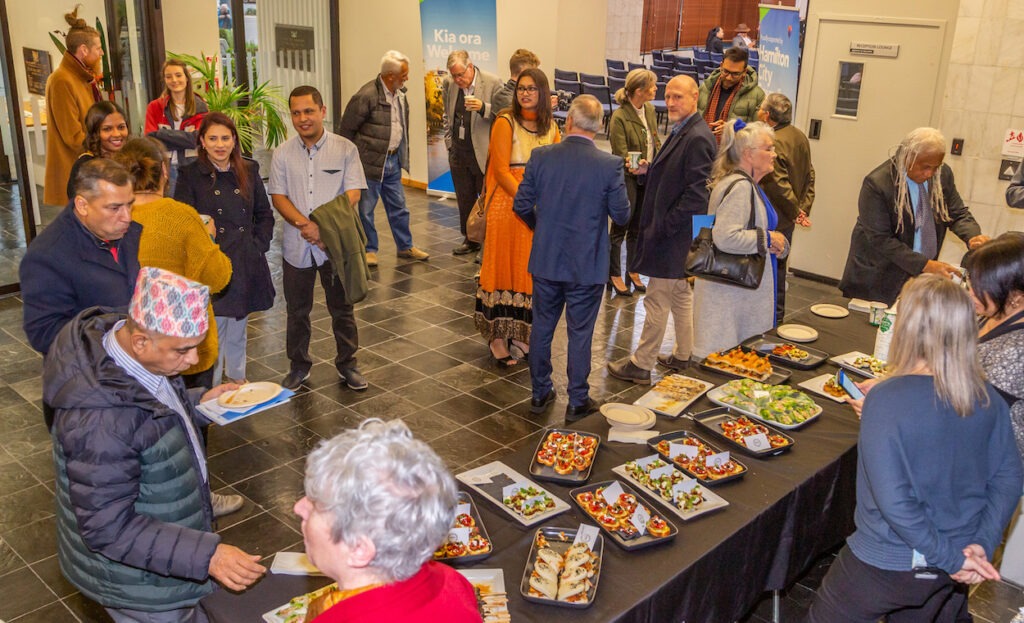
Photo from the 2022 Hamilton City Council Welcoming Week Launch held in the Reception Lounge at Hamilton City Council, Hamilton, Waikato, New Zealand. Taken: Friday, 9 September, 2022. Photography: Paul Melton for KeyImagery Photography. Copyright: © Hamilton City Council.
Q: How do you connect with community groups, and ensure participation in the whole-of-community welcoming approach?
There are about 80 formal ethnic and faith organisations in Hamilton included in the 2022 Your Guide to Hamilton. As part of socialising our Welcoming Plan and promoting Welcoming Week, I invited leaders to a Welcoming Communities forum to get continuous feedback on our plan, so it’s developed collaboratively. We need more cross-cultural or intercultural collaboration, so for example, it’s not just Chinese community groups welcoming Chinese students, or Filipino groups welcoming Filipino newcomers.
During Welcoming Week, we witnessed community centres, which usually serve specific ethnic groups, open their doors to other communities.
Moreover, welcoming should not be left to individuals and organisations. It should be the whole city, and all residents trying to see what they can do to make another person feel welcome. Whilst the intent of Welcoming Communities was for migrants, refugees and international students, I believe MBIE has expanded ‘welcoming’ to not just focus on those particular labels but asking, “How do you make anyone who is new to Hamilton feel welcome?”
Q: What advice would you give to other localities that are starting to host Welcoming Week events?
I would emphasise the need to partner and work with Tangata Whenua, involving them in conversations early on. Work with ethnic and settlement organisations and co-create a plan with them. It’s still a work in progress in New Zealand and building connections continues to be a challenge, but I’m pleased that we have built – and continue to develop – these connections.
Q: How does the national Welcoming Communities Program network support you?
The MBIE team is supportive. They’re just an email or a phone call away if I have questions. We have monthly coordinators’ network meetings, a chance to share emerging needs and updates on our progress. It’s a knowledge exchange space. We also have group chats where we share materials and resources that other coordinators might find useful.
I can only say good things about the support provided to me since we joined the Welcoming Communities and worked to develop our Welcoming Plan. When we developed the plan, the Welcoming Communities program managers provided feedback. They also hired Allen and Clark to provide external technical assistance on the topic of monitoring and evaluation and build Coordinator’s capacity to develop projects and programs.

